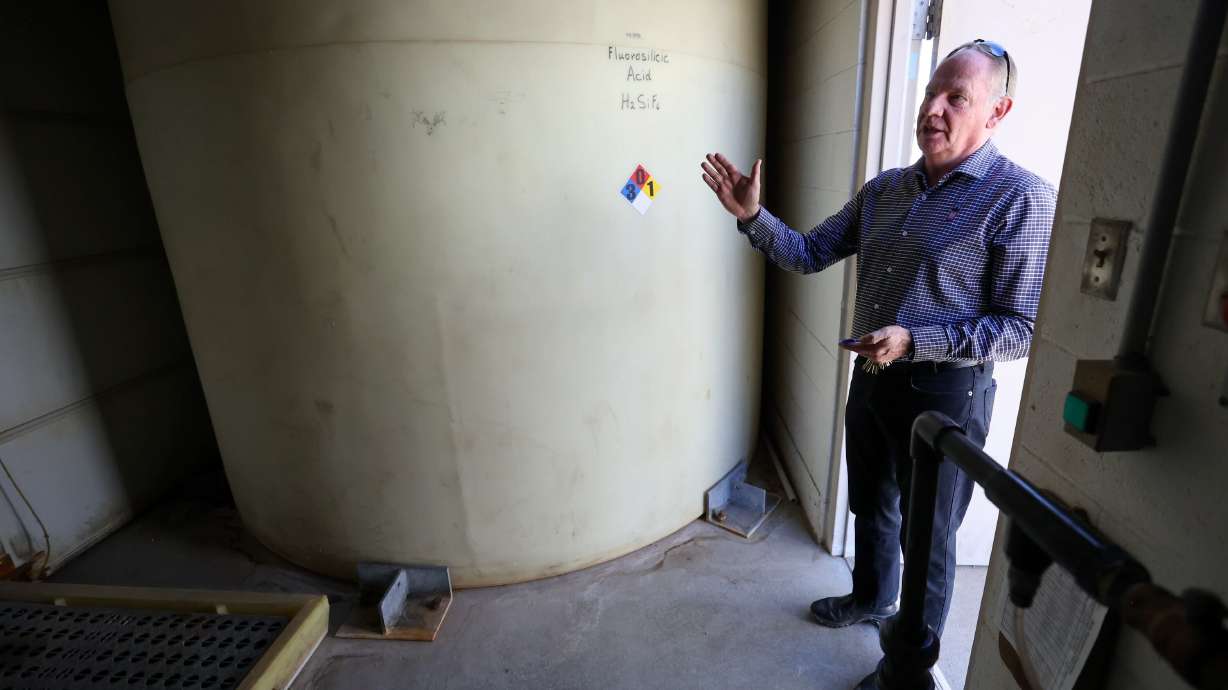Estimated read time: 5-6 minutes
- The American Dental Association urges Utah Gov. Spencer Cox to veto HB81, ending community water fluoridation.
- Supporters cite fluoride's dental health benefits; opponents highlight safety and cost concerns.
- A recent fluoride overfeed incident and a federal court ruling question fluoride's safety.
SALT LAKE CITY — The American Dental Association is pushing hard for Utah Gov. Spencer Cox to veto a bill that would prohibit the introduction of fluoride into public water drinking systems.
Members and their supporters held a rally Friday morning at the state Capitol, which follows a letter they sent to Cox this week.
"On behalf of the 159,000 members of the American Dental Association, we urge you to veto House Bill 81 that would cease community water fluoridation in Utah. Utah would be the only state to end this preventive health practice that has been in place for over three quarters of a century. House Bill 81 would adopt public policy that is in complete opposition to the mission of the ADA which, along with many other health organizations, endeavors to promote disease prevention in the most effective, efficient and equitable ways," the letter read.
HB81 by Rep. Stephanie Gricius, R-Eagle Mountain, has cleared both the House and the Senate, awaiting Cox's signature.
In committee hearings on the measure, multiple people testified in favor of the bill, with some detailing its harmful side effects and, in one case, the belief that overexposure forever changed the life of a young teenager.
Operators of the districts that handle the injection of fluoride also want the practice stopped. Some argued it was a safety issue and took millions of dollars to implement, while Brigham City's mayor said it simply was not an efficient use of money since the systemwide application means it goes into toilets, kitchen sinks and on lawns.
In contrast, multiple dentists and representatives of the Utah Dental Association and American Medical Association urged the practice to continue because of its benefits to dental health and the prevention of cavities.
"Water fluoridation is listed as one of 10 great public health achievements of the last century by the U.S. Centers for Disease Control and Prevention, in line with vehicle safety measures, healthier mothers and babies and reduced deaths from coronary heart disease," the letter to Cox read. "We urge you to preserve this achievement. The state's continued oral health, the lack thereof has been linked to several other chronic diseases, including cardiovascular disease, low birthweight and diabetes, depends on you."
The Fluoride Action Network responded by asserting the numbers listed in the letter to Cox are not supported by sound statistical data.
"I looked at the data. Utah has very shoddy data on caries in kids. Davis County, the only other county with substantial fluoridation besides Salt Lake County, is mysteriously missing data for their 2005 dental survey," said the group's scientific director Chris Neurath. "And even more mysteriously, caries rates aren't broken down by county (or health district) at all for the 2010 and 2015 surveys, so the only survey with any data for the two fluoridated counties is the year 2000 survey, which was before any fluoridation started! The only usable data available from the state website is statewide rates for the four survey years; 2000, 2005, 2010, 2015."
Salt Lake and Davis counties have fluoridated water after voter approved initiatives. Small communities — like Brigham City and Helper — also introduce the substance.
The good, the bad and the ugly
Perhaps fluoride in drinking water would not be such a contentious issue if not for the Sandy overfeed that happened in 2019.
Sandy city, the Salt Lake County Health Department the Utah Department of Environmental Control were all left struggling to combat the aftermath, with much finger pointing going on as to who could or should answer to the public.
In that incident, the well's pump was operational, and when an alarm went off and was cleared, the fluoride pump began to work, discharging the fluoride. Because it is 20% denser than water, it displaced the water and was fed by gravity into a portion of the drinking water system.
An independent investigation by an engineering firm looking at the fluoride overfeed in Sandy that sickened hundreds of residents revealed missteps at all levels by government agencies handling the emergency.
Specifically, a 181-page report produced by Hansen, Allen & Luce shows there were problems with coordination and documentation of conversations among the agencies involved and lapses in communication that led to a failure to notify the public to refrain from drinking the contaminated water — until 10 days after the release happened.
Testing in some samples showed fluoride at 40 times the federal threshold of 0.7 milligrams per liter of water, but now that level is even under review.
In September, a U.S. District Court judge in California said that adding fluoride to drinking water presents an "unreasonable risk" to young children and especially babies.
That ruling in a judgment against the U.S. Environmental Protection Agency directs the federal government to come out with new regulations on adding fluoride to drinking water.
Judge Edward Chen said: "The 'optimal' water fluoridation level in the United States of 0.7 milligrams per liter is nearly double that safe level of 0.4 milligram per liter for pregnant women and their offspring. In all, there is substantial and scientifically credible evidence establishing that fluoride poses a risk to human health."
Fluoride concentrate in its undiluted form is classified as a hazardous, poisonous material that, while it contains fluoride, also contains arsenic, lead, copper, manganese, iron and aluminum. It is a byproduct from phosphate mining operations.
Gricius' bill softens pharmaceutical regulations so people who want fluoride can obtain it without a doctor's prescription.
In this way, people who want fluoride can still get it but those who don't are not subject to mass distribution.









